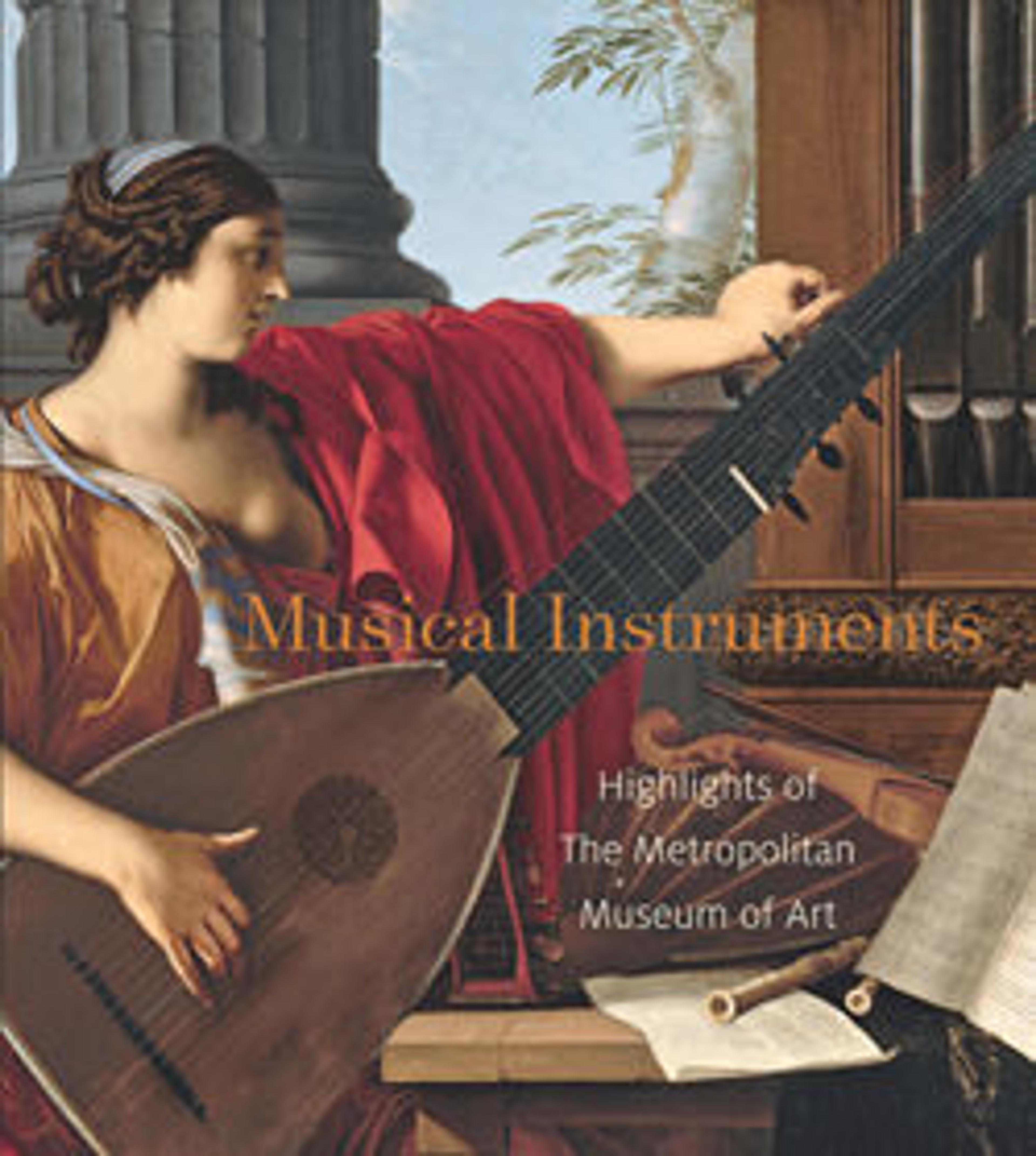Serpent
The serpent is a European bass brasswind instrument that was a predecessor of the tuba. Its snake-like form helps to position the finger holes within reach of the player’s hands. The serpentine qualities of this example, made by one of the most celebrated makers, are heightened by its zoomorphic paint scheme, a rare decorative embellishment for an instrument that was typically finished in black. The wear marks around its finger holes are the result of extensive use. They show how this serpent was held and also prove that its musical properties were as strong as its visual appeal.
The serpent has a long association with church music. In France it was used to bolster and accompany plainsong from the late sixteenth century onwards. Its warm, resonant sound complemented male voices, and it found favor in English church bands during the eighteenth and nineteenth centuries. Played alongside the cello and the bassoon, it provided vital accompaniment in churches that could not afford organs. The serpent became a popular military band instrument in England and Germany in the mid-eighteenth century. It sometimes was used as a bass voice in the orchestra, notably by Handel, Haydn, Berlioz, and Mendelsohn.
The serpent has a long association with church music. In France it was used to bolster and accompany plainsong from the late sixteenth century onwards. Its warm, resonant sound complemented male voices, and it found favor in English church bands during the eighteenth and nineteenth centuries. Played alongside the cello and the bassoon, it provided vital accompaniment in churches that could not afford organs. The serpent became a popular military band instrument in England and Germany in the mid-eighteenth century. It sometimes was used as a bass voice in the orchestra, notably by Handel, Haydn, Berlioz, and Mendelsohn.
Artwork Details
- Title:Serpent
- Maker:C. Baudouin (French)
- Date:ca. 1820
- Geography:Paris, France
- Culture:French
- Medium:Wood, leather, paint, brass
- Dimensions:32 3/4 × 4 3/4 × 10 1/4 in. (83.2 × 12.1 × 26 cm)
- Classification:Aerophone-Lip Vibrated
- Credit Line:Purchase, Robert Alonzo Lehman Bequest, 2012
- Object Number:2012.568a–c
- Curatorial Department: Musical Instruments
More Artwork
Research Resources
The Met provides unparalleled resources for research and welcomes an international community of students and scholars. The Met's Open Access API is where creators and researchers can connect to the The Met collection. Open Access data and public domain images are available for unrestricted commercial and noncommercial use without permission or fee.
To request images under copyright and other restrictions, please use this Image Request form.
Feedback
We continue to research and examine historical and cultural context for objects in The Met collection. If you have comments or questions about this object record, please contact us using the form below. The Museum looks forward to receiving your comments.
